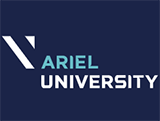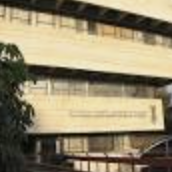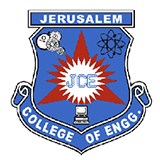Introduction to Jerusalem Academy of Music and Dance
Overview
The Jerusalem Academy of Music and Dance (JAMD) is a higher education institution located in Jerusalem, Israel, founded in 1933. The academy is known for its excellence in music and dance education and research, aiming to train musicians and dancers with professional skills and artistic attainments. JAMD is located in the center of Jerusalem, and this location provides students with rich cultural and artistic resources.
Historical Background
The establishment of the Jerusalem Academy of Music and Dance can be traced back to 1933, when violinist Emil Hauser founded the academy. Since its establishment, the academy has been committed to promoting music and dance education in Israel and has trained a large number of outstanding artists and educators. In 2018, JAMD signed a cooperation agreement with China's Central Academy of Drama, further expanding its international influence.
School characteristics
The Jerusalem Academy of Music and Dance is known for its unique school characteristics, which mainly include:
Interdisciplinary education: The academy encourages interdisciplinary research and learning, and provides courses that cross multiple disciplines to help students develop comprehensively.
Practice-oriented: The academy emphasizes the combination of theory and practice, and helps students master practical skills through concerts, performances and internships.
Small class teaching: The academy adopts a small class teaching model to ensure that every student can receive full attention and support.
International vision: The academy actively establishes cooperative relations with many well-known universities and research institutions in the world to provide students with an international learning and research platform.
Course settings
The Jerusalem Academy of Music and Dance offers a wide range of undergraduate and graduate courses covering multiple fields of music and dance, including:
Music: Including composition, conducting and music education, instrumental performance (piano, violin, cello, etc.), vocal music and other directions.
Dance: Including modern dance, ballet, folk dance and other directions.
Performing arts: Including drama performance, stage design, lighting design and other directions.
Movement and movement symbols: Study the expression and symbolization of human body movements, applied to dance and performing arts.
Teaching Mode
The Jerusalem Conservatory of Music and Dance adopts a flexible and diverse teaching mode, including:
Theoretical courses: provide systematic theoretical knowledge to help students build a solid academic foundation.
Practical courses: through concerts, performances and laboratory work, students can practice hands-on and master practical skills.
Seminars and lectures: regularly invite industry experts and scholars to give lectures at the school to provide students with the latest industry trends and academic cutting-edge knowledge.
Online learning: provide online courses and learning resources to facilitate students' independent learning.
Teaching quality
The Jerusalem Conservatory of Music and Dance has a team of highly qualified teachers, many of whom are well-known artists and educators active in the fields of music and dance. The school also regularly invites internationally renowned artists and scholars to give lectures at the school to provide students with the latest industry trends and academic cutting-edge knowledge.
International cooperation
The Jerusalem Conservatory of Music and Dance has established cooperative relations with many internationally renowned universities and research institutions to carry out academic exchanges and joint research projects. These collaborations not only enhance the international influence of the school, but also provide students with more learning and development opportunities. For example, the school has signed student exchange agreements with many universities in the United States, Europe and Asia, providing students with rich international learning experiences1.
Campus Life
The main campus of the Jerusalem Academy of Music and Dance is located in the center of Jerusalem, with convenient transportation and complete surrounding facilities. The campus environment is beautiful and the facilities are modern, including:
Library: rich in books, providing a variety of academic resources and learning space.
Concert Hall: equipped with advanced sound equipment to support performances and concerts of students and teachers.
Dance Studio: equipped with professional dance floors and mirrors to support dance training of students and teachers.
Multimedia Classroom: provides modern teaching facilities and technical support.
Student Service Center: provides students with academic counseling, career planning, psychological counseling and other services.
Student Clubs: provides a wealth of extracurricular activities and club organizations to promote the all-round development of students.
Research Results
The Jerusalem Academy of Music and Dance has carried out a lot of cutting-edge research in many fields and published many high-level academic papers. For example, the academy has achieved remarkable research results in the fields of musicology, dance and performing arts. The academy's research projects have been funded by the Israel Science Foundation, the Ministry of Culture and other government departments many times, showing its strong strength in the field of scientific research.
Tuition Fees
The tuition fees of the Jerusalem Academy of Music and Dance vary depending on the courses and programs. Generally speaking, the tuition fees for undergraduate programs are between 15,000 and 20,000 shekels, while the tuition fees for graduate programs are between 18,000 and 25,000 shekels. The academy also offers a variety of scholarships and grants to help students with financial difficulties complete their studies.
Notable Alumni
The Jerusalem Academy of Music and Dance has trained many outstanding alumni who have made remarkable achievements in their respective fields. These alumni have not only made their mark in Israel, but also demonstrated the educational achievements of the academy on the international stage. For example, some alumni have won awards in international music competitions, while others have served as principal dancers or choreographers in well-known dance companies.
Conclusion
The Jerusalem Academy of Music and Dance has become a pearl in the field of music and dance education in Israel with its excellent educational quality and innovative school-running model. The academy not only provides students with rich academic resources and practical opportunities, but also lays a solid foundation for their career development and international vision. In the future, the Jerusalem Academy of Music and Dance will continue to uphold its open and inclusive educational philosophy, promote academic innovation and social progress, and make greater contributions to the development of human society.
-

Reichman University
-

Ariel University
-

Open University of Israel
-

Weizmann Institute of Science
-

Hebrew University of Jerusalem
-

Ben-Gurion University of the Negev
-

Bar-Ilan University
-

Jerusalem Academy of Music and Dance
-

Jerusalem College of Engineering
-

Hadassah Academic College, Jerusalem
-

Mesoamerican University
-

Istmo University
-

Mariano Galvez University of Guatemala
-

Regional University of Guatemala
-

Galileo University
-

Francisco Marroquín University
-

Rafael Landívar University
-

University of the Valley of Guatemala
-

University of San Carlos of Guatemala
-

Technological Institute of Tlaxcala Plateau
-

Golfo University
-

Technological University of South Sonora
-

Technological University of Huejotzingo
-

Tizimín Institute of Technology
-

Chilpancingo Institute of Technology
